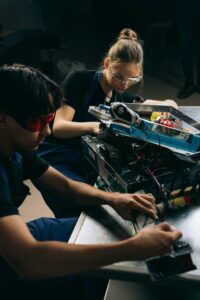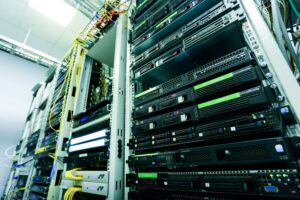Learn more about how technology advancement in 2019
- In humanoid robots designed to socialize with people
- Minuscule lenses that will pave the way for diminutive cameras and other devices
- Strong, biodegradable plastics are from useless plant wastes
- DNA-based data-storage systems that will reliably information and more.
BIOPLASTICS COULD SOLVE A MAJOR POLLUTION PROBLEM
Biodegradable plastics can ease these problems, “circular” plastic economy in which plastics derived and converted back to biomass.
Recent breakthroughs in producing plastics from cellulose or lignin (the dry matter in plants) promise to overcome those drawbacks.
In an added boon for the environment, cellulose and lignin can be obtained from non-food plants
PLA is recyclable, biodegradable and compostable
ADVANCEMENT IN ROBOTICS
In industry and medicine, robotics can perform major role in surgery and dispense prescription drugs in pharmacies.
“social” robots—which are designed to engage with people and to elicit an emotional connection
Social robots use artificial intelligence to decide how to act on information
Using this technology Which received through cameras and other sensors with ability to respond in ways
Advances in AI have enabled designers to translate such psychological and neuroscientific insights into algorithms
The algorithm performs in robots to recognize voices, faces and emotions,
interpret speech and gestures make eye contact, speak conversationally
Adapt to people’s needs by learning from feedback, rewards and criticisms.
HOW METALENS HELPFUL IN OPTICAL FIBRE
Metal lens must be smaller and lighter.
These lenses could allow for greater miniaturization of microscopes and other laboratory tools,
Metalens are used in consumer products which includes in cameras and optical sensors
It will enhance the functionality of optical fibres.
NEW POSSIBILITIES FOR TREATING CANCER AND OTHER ILLS
Decades ago scientists identified a particular class of proteins driving illnesses from cancer to neurodegenerative disease.
The “intrinsically disordered proteins” (IDPs) are looking different from the other proteins
IDPs were shapeshifters, appearing as ensembles of components that constantly changed configurations.
Less flexible proteins tend to have a more limited number of binding partners.
Personalized vaccines, cell therapy, gene editing and microbiome treatments are technologies that will change the way cancer is treated.
SMARTER FERTILIZERS CAN REDUCE ENVIRONMENTAL CONTAMINATION
Controlled-release fertilizers are part of a sustainable approach to agriculture known as precision farming.
This approach improves crop yield and minimizes excessive nutrient release by combining data analytics, artificial intelligence
Various sensor systems to determine exactly how much fertilizer and water plants need at any given time
By deploying autonomous vehicles to deliver nutrients in prescribed amounts and locations.
SAFER NUCLEAR REACTORS ARE ON THE WAY
Controlling carbon in the atmosphere will require a mix of energy technologies
The nuclear reactors, which emit no carbon it will leads to risky
Commercial reactors have used the same fuel for decades: small pellets of uranium dioxide stacked inside long cylindrical rods made of a zirconium alloy.
Zirconium allows the neutrons generated from fission in the pellets to readily pass among the many rods submerged in water inside a reactor core, supporting a self-sustaining, heat-producing nuclear reaction.
DNA DATA STORAGE HELPFUL IN BAR CODING
DNA is used to manage data and store tremendous volumes of data
These data can be stored in the sequence of these letters, turning DNA into a new form of information technology
With this ability, investigators can employ bar coding—use of DNA sequences as molecular identification “tags”—to keep track of experimental results
DNA barcoding is now being used to research in fields
Source: Scientific american


